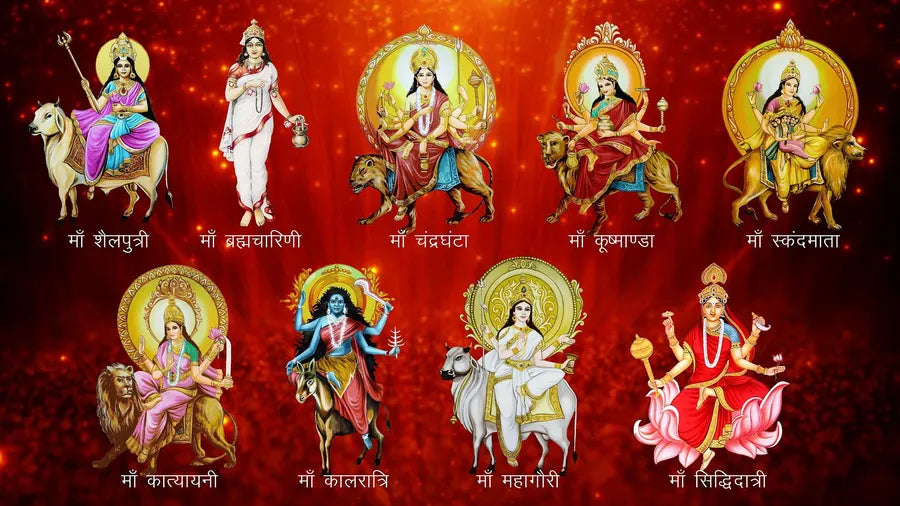Introduction
Navratri is a festival that holds a special place in the hearts of millions. Celebrated with great fervor and devotion, this Hindu festival is dedicated to the worship of the Divine Feminine, Goddess Durga. At KARIGAROFFICIAL, we offer a range of products and services to help you celebrate Navratri in the most spiritual and fulfilling way. In this blog, we'll dive into the significance of Navratri and how you can benefit from our offerings. This year, the Navaratri begins on October 15, 2023, and ends on Oct 23, 2023 Navaratri ends / Maha Navami.
The Significance of Navratri Festival
The term 'Navratri' is derived from two Sanskrit words: 'Nav,' meaning nine, and 'Ratri,' meaning night. The festival is celebrated in various forms across India, but the most popular is Sharad Navratri, which occurs in the autumn season. The festival commemorates the victory of Goddess Durga over the demon Mahishasura, symbolizing the triumph of good over evil. During the nine nights of Navratri, devotees worship the nine avatars of Goddess Durga, each representing a unique aspect of the Divine Feminine.
4 Types of Navratri
Shardiya Navratri
- Popularity: Most POPULAR
- Celebration Months: Mainly September or October
- Significance: Victory of Goddess Durga over Mahishasur; most auspicious time for worship.
Chaitra Navratri
- Popularity: Marks Hindu New Year
- Celebration Months: March or April
- Significance: Beginning of Hindu New Year; protection from negative cosmic influences.
Magha Gupt Navratri
- Popularity: Lesser-Known
- Celebration Months: Usually in January or February
- Significance: best time for Sadhus and Tantriks to perform Sadhna and attain supernatural powers/ tantric practices.
Ashadha Gupt Navratri
- Popularity: Least Known
- Celebration Months: June or July
- Significance: Worship brings wealth, knowledge, and positive energy.
How People Celebrate Navratri Festival
Navratri celebrations vary from region to region, but the underlying essence remains the same—devotion and spirituality. In Gujarat, for instance, the festival is famous for its Garba and Dandiya dances. Devotees also observe fasts, offer prayers, and perform pujas to seek blessings from Goddess Durga. The festival is not just about external celebrations; it's a time for inner reflection and spiritual growth.
Benefits of Navratri Puja and Yagyas
Performing pujas and yagyas during Navratri can bring immense spiritual benefits. These rituals purify the atmosphere, bringing positive energy, protection, and strength. At KARIGAROFFICIAL, we offer Variety of statues of Maa Durga specially designed for Navratri Puja for Home Temple, allowing you to participate in these sacred practices from the comfort of your home. Our statues are aimed at helping you attain spiritual enlightenment and material prosperity.
Rituals: A Step-by-Step Guide to Navratri Puja at Home
Items Needed for the Puja
- Kalash: A pot filled with water, placed on a bed of grains.
- Aarti Plate: Contains essential items like incense, camphor, and wicks for the oil lamp.
- Fruits and Sweets: Offerings for the goddess.
Performing the Rituals
Performing Navratri Puja at home is a sacred tradition that brings the family together. Here's a simplified guide to help you:
- Ghatasthapana: On the first day, a Kalash (pot) is filled with water and placed on a bed of grains. A coconut is placed on top, symbolizing the goddess.
- Daily Aarti and Offerings: Perform Aarti twice a day and offer fruits and sweets to the goddess.
- Reading Scriptures: It's customary to read the Durga Saptashati during these nine days.
- Fasting: Many devotees observe fasting, either eating fruits or a single meal a day.
- Visiting Temples: Although optional, visiting a Durga temple can enhance the spiritual experience.
The Nine Goddesses: Stories and Significance
Discover the nine divine forms of Goddess Durga and the unique stories and significance behind each:
- Shailaputri: Known as the daughter of the mountains, she is worshiped on the first day.
- Brahmacharini: Represents penance and austerity.
- Chandraghanta: Known for her bravery and courage.
- Kushmanda: The creator of the universe.
- Skandamata: The mother of Lord Kartikeya.
- Katyayani: Born to the sage Katyayan, she is a fierce form of Durga.
- Kaalratri: The most ferocious form, representing destruction.
- Mahagauri: Symbolizes purity and cleanliness.
- Siddhidatri: Grants wisdom and insight.
Significance of 9 Colors in Navratri
The tradition of wearing specific colors during Navratri is popular, especially in Maharashtra and Gujarat. During the nine days of Navratri, each day is associated with a specific color that holds unique significance. Devotees, especially women, observe fasts and wear clothes matching the color of the day. Each color symbolizes different virtues and attributes, ranging from peace and purity to courage and passion. Here are the colors for Navratri 2023 and their significance:
- Day 1: White: Symbolizes peace and purity.
- Day 2: Red: Represents health and passion.
- Day 3: Royal Blue: Stands for emotional balance.
- Day 4: Yellow: Signifies joy and enthusiasm.
- Day 5: Green: Represents nature and prosperity.
- Day 6: Grey: A unique color that makes a subtle fashion statement.
- Day 7: Orange: Symbolizes fervor and enthusiasm.
- Day 8: Peacock Green: A sublime color for the eighth day.
- Day 9: Pink: Combines the energy of red and the stability of blue.
-
Tradition and Popularity: The tradition of wearing specific colors during Navratri is particularly popular in Maharashtra and Gujarat. Leading newspapers in these states often publish articles highlighting the colors to be worn each day and their significance.
-
Spiritual and Cultural Importance: Observing the colors of Navratri is considered very sacred in Hindu religion. It is not just a tradition but a spiritual practice that brings devotees closer to the divine.
Conclusion
In this comprehensive guide, we've delved into the heart of Navratri 2023, a festival that transcends mere celebration to become a spiritual odyssey. From understanding the significance of each of the nine goddesses to preparing for the intricate rituals, this blog aims to be your ultimate roadmap. As you adorn your homes with Navratri decorations and prepare the special recipes, remember that you're not just participating in a festival; you're becoming a part of a timeless spiritual journey. So, whether you're a seasoned devotee or new to the festival, let the nine nights of Navratri fill your life with the divine blessings of Durga, Lakshmi, and Saraswati. May this Navratri bring you closer to the essence of Hindu culture and spirituality.

